Convincing Huck Finn to whitewash the #SecondLife fence.
This is one of those blog posts that will invariably be written from the top of my head, but definitely less technical. It’s about life experience, history repeating, and of course about why I really don’t like “other” grids in SecondLife. I understand very well that “other” grids aren’t necessarily part of SecondLife and it can be argued that they are separate entities unto themselves. For instance, OSGrid, ReactionGrid, InWorldz (which I have a particular distaste for), SpotOn3D (which is probably the only grid that actually manages to piss me off simply because of their arrogance and disregard), and others.
This isn’t to say that I dislike all other grids, however I do keep the whole thing in proper perspective, which seems to be a rarity with those who actually use those grids.
Let me tell you a story about my
first years in virtual reality.
I got my start back in the days of VRML and places like Blaxxun Contact, but the system I was using back then wasn’t exactly Blaxxun. Instead it was a place called Cybertown (which to this day most likely still exists as a digital ghost town). Cybertown could be described under the concept that I became very familiar with over the years called a White Label product, whereby the company responsible for the technology or service would license that technology to third parties without any branding. In the case of Blaxxun (and I’m sure BSContact can correct me if I’m wrong), it was a company that made a good technology product – in that they made a multi-user layer for VRML systems, and that technology was white labeled and licensed to third parties who would then create their “unique” systems powered by Blaxxun Contact technology.
Years later, I encountered this scenario while using ActiveWorlds technology. Their main universe, the Active Worlds Universe, was really of little concern to the company because they made a majority of their money (and probably still do to this day) licensing out their technology to third parties as a white label product and service. Just like the scenario with Blaxxun, there existed in the case of ActiveWorlds dozens or maybe even hundreds of third party “Active Worlds” based universe systems all rebranded with different company names and sold as unique services, all betting on the idea that nobody had heard of ActiveWorlds, or any of the other third party universes to begin with.
Concerning ActiveWorlds, at least they were partially correct in assuming nobody had heard of the parent company responsible for the technology. But during those years I wound up with a sort of virtual world fatigue. I’m sure any long-term virtual environment user will concur, that virtual world fatigue is real and it comes and goes, but often is triggered by oversaturation of similarity.
What brought this on in my AW years was this constant insistence by third party universe owners (white labeled universes) that I should leave ActiveWorlds and come join their universe instead. Clearly they were better than ActiveWorlds, would go the argument. They, of course, had essentially bolted on various additions to the browser at the time, maybe set up a novel registration system, or paid for certain modifications to the ActiveWorlds browser or server which made their version slightly different. Many of these third party, white-label universes were small fish in the ocean of virtual worlds and you’ve likely never heard of them before. Places like Virtual Celebrity Islands (Peace City), Virtual U, SpiralMatrix, Vectorscape, Galaxyworlds, Cybernet Worlds, and even the ill-fated Juno Internet Service had their own browser at one point. If you’re an ActiveWorlds user (or an old timer who remembers) those names should sound familiar, but if you weren’t in the ActiveWorlds scene, then it is highly likely none of those systems ring a bell, let alone remembering ActiveWorlds itself.
Part of the third party ploy to attract users away from other systems and from ActiveWorlds itself was to offer cheap land and server space for the object paths (sound familiar?) or tout how they had a better and easier setup and registration process that in some way had different features that made it better than what Activeworlds had offered. Many even introduced their own in-world currency system.
Is any of this sounding familiar to you?
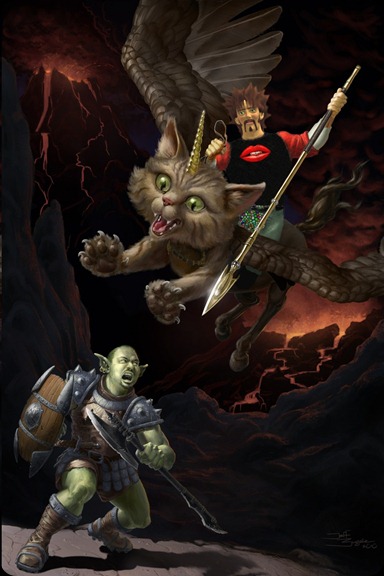
This pretty much sums up what goes through my mind
In the end, the hard truth of the matter was this: No matter how much any of them tried to differentiate themselves from the main company responsible for the technology in the first place, they always fell short and instead were always seen as either short term flash-in-the-pan or (more appropriately) living in the constant shadow of Activeworlds, and thus perceived as a cheap copy.
There was, of course places that exist today like VirtualU, but despite the in-world hacking and paid additions to the software in order to add features and abilities, to this day the idea of a specialized system built for expos and business meetings never seemed to make sense to me (and even if it did, I can’t imagine that business is exactly booming). The modern equivalent to VirtualU today is SpotOn3D, who I’ve had the pleasure of hearing insist to me how they alone finally got this “virtual world” thing right when all else have not – however not realizing that it’s all been done before and has failed, and that I actually know this because I witnessed it myself over many years in the industry before SecondLife even existed. But moreover, the modern equivalent to all of those third-party universes from the Activeworlds white-label process happens to be the scenario by which we have all of these different “grids” and then SecondLife as the main example of the technology.
Just replace the word “Universe” with “Grid” and you realize we’ve repeated the scenario once again, and I’m seeing pretty much the same outcomes and attitudes replayed.
With InWorldz, they remind me of SpiralMatrix or Cybernet Worlds, where the land is basement priced, the service is on par, and the technology is two generations or more behind the main company responsible for the technology to begin with. The users of that system act like a cult from Utah, and insist it is far superior to even SecondLife or any of the other grids, and always cite things like “the land is so much cheaper here!”. Hell, they even created their own currency in world called I’s or whatever. Congratulations to the hard work of the team behind InWorldz, because it does take a lot of work to run and operate a virtual world environment. However, your “grid” is doomed to obscurity in the grand scheme of things, and if SecondLife itself is a niche audience, yours is a niche within *that* niche.
I have the same to say about most “grids” and even to many virtual environment systems on the whole like BlueMars and Kaneva, and (yet again) There.com. Let me address a few “grids” here. It’s not sugar coated, and it’s going to hit a nerve, but at least I’m being blatantly honest and upfront. I’m sure it is likely to offend, because I’m not about to paint a rose-colored picture of where we’re at as a whole.
I’m about to be very candid, and straight to the point.
If you wish to remain unoffended or stay within your rose-colored world where nothing you do is wrong, I suggest you skip the rest of this post, as it will be a realist viewpoint verging on the edge of cynicism. Any comments that are derogatory, flaming or just outright attacking will be ignored entirely. This is just my own opinion and analysis, without any sugar coating – it will likely be very harsh.
SpotOn3D – you haven’t gotten anything right. You’re just arrogant and ignorant. All the business acumen in the world didn’t save you from brewing the worst PR sh*tstorm you could have mustered, and a lack of actual understanding for the history and practice of virtual worlds as a whole has you repeating common (yet completely avoidable) mistakes. You don’t seem to understand the merit of how people react to what seems like subtle policies or actions on your part, and that it would cause trouble in the long run. Pride comes before the fall. You haven’t done anything at all different than when I called your idea “VirtualU” or any number of other virtual world environments who thought it was a novel and innovative idea ten years ago to set up a walled garden system to cater to business professionals and schools. You’re heading down the same path as your predecessors, gleefully and completely oblivious, if not outright self-assured. If anything, the recent PR nightmare should have been your wake-up call.
InWorldz – Put a leash on your community. It’s ok to want to grow your userbase, but not through sleazy practices like trying to get people to leave other virtual environments. I don’t hold you, as the company, at fault. I fault your community – but you can make a big difference in that perception by actually coming up with creative outlets to promote InWorldz *outside of the SL community niche* like an actual, honest to god, real company would. Right now, you (and many other grids) are giving off the perception that you’re a bunch of vultures fighting over users. That has to stop if you ever hope to be a brand and service that stands on its own merit, and not in the shadow of others – a footnote in the history of virtual worlds, if you even bother to warrant that much.
Avination: Start with what I just said about Inworldz and add to it this nugget of knowledge: An online marketplace isn’t the reason your in-world land sales falter. Banning magic-boxes isn’t any more of a solution than banning automobiles because you can’t seem to sell horses anymore. The problem isn’t the innovation in marketplace type systems, it’s the lack of added value in having in-world stores. Forcing the issue isn’t a solution. Instead, why not offer education to your business users or entrepreneurs to show them that actually running a virtual business implies many of the same things as running a real business, and that if they insist on making their “store” nothing more than a fancy vending machine, then they should not expect people to treat it any better than that. Having a privately held marketplace system that doesn’t interoperate with other grids unless they agree to a privately held agreement does more damage than good in the bigger picture – and is the same lesson I offer to SpotOn3D as well as Linden Lab, except in the notion that Linden Lab can afford to ignore this for the time being while you and other open grids cannot.
Kitely: While you have a good idea, I don’t believe it has really been brought to your attention that marginalizing and perpetuating the already damaging image of treating virtual environments as disposable and cheap is bad for the industry as a whole. The entire point of the virtual world industry is to try and convince the majority of the public that virtual worlds are a lasting, persistent and engaging arena for all manner of interactions – so much so that it has the potential to supplant or greatly augment current web practices. By offering cookie-cutter, on-demand, throw-away instances, you bring that higher understanding down to the level of “gimmick”. While you are poised to make money in the short term, and even make an adequate business model from doing so, the bigger picture is that the cost of doing so is near irrevocable damage to the overall perception and expectation of seriousness and persistence for virtual worlds as a whole. On-demand spaces serve a very small niche, while perpetuating negative ideals of what a virtual world should be to the masses.
Linden Lab: I don’t even know where to begin. You have a decent system, not the best. There is a lot to offer but it is buried in bad decision making, high employee (and CEO) turnover, and stagnation in innovation. You have a marketing leader who has done little to innovate the perception or lead of your company. Of the 150 brand names in virtual worlds as of 2006-2007 (as reported by KZero), considered the hey-day of SecondLife, possibly 2 exist actively in SecondLife today, while brand names like Dell Computer are a digital wasteland of inactivity, probably flying under the radar of accounting and existing purely on recurring billing. Searching for any of those brand names today is like reading a virtual worlds obituary. You control the most powerful marketing engine the world has ever known called Marketplace in conjunction with what amounts to the most ideal (for the time being) method of immersive experience, and fail to see the connection between real life brands as marketing and prosumer culture by which your system boasts in spades.
You literally have an army of content creators who would bend over backwards to accommodate your company in the unlikely event that you implemented an IP system which rewarded users for creating content on behalf of brand names instead of punished them. This should be your focus, and not expending inordinate amounts of time and money chasing down DMCA requests and playing virtual worlds Whack-a-Mole. Instead, your marketing director has spent the last year “getting acquainted” with SecondLife and has enacted what constitutes business as usual – all the while seemingly not understanding that SecondLife is far from business as usual and by no means should be treated like a video game. Instead of implementing a prosumer based solution to your dilemma you continue to approach this issue in brick and mortar methods; separation between producers of content and consumers – you’re thinking like a video game company and not like an open ended virtual environment company. In the process, you continually invoke the Streisand Effect, shutting down one or a group of IP infringing creators, only to have twenty or more pop up shortly after either on your marketplace or bypassing your gaze and selling directly in-world. Your IP “Pop Quiz” that every person needs to take and pass before they are allowed to upload content via Mesh is the thinnest veil of a solution, demonstrated by the Back to the Future Delorean Mesh car replica sitting on the Beta Grid – not just one, but half a dozen of them.
Instead of wasting money and time playing cat and mouse, or covering your ass in the thinnest excuse for IP protection action you could muster, it’s time to use your resources to work smarter and not harder. You need to give those brands a reason to come back, and this time actually stick around. You need to do this in a manner which celebrates the fact that you have an army of prosumers who are more than eager to do your bidding and win sanction for those brand names, to do the work for them, and hold their heads up high as the official outlets of those products in your virtual space, while giving those brand names inexpensive and viral capacity for marketing in the virtual environment. It’s time to turn your perception of negative into positive and use it to your advantage. Clearly Linden Lab didn’t give them a reason the first time when they had all the world as a stage, so you had better be willing to roll up your sleeves and work on being innovative and enticing to those brands that you lost, getting them (and far more) back into your system. It’s not as hard as you’re making it out to be, trust me.
When you said you didn’t understand why SecondLife had staying power, or why it continues to be popular, I knew you weren’t lying. It clearly has an appeal that has yet to be effectively quantified for you or your staff, or how to actually use that to your advantage. Just ask your marketing director, who doesn’t seem to have any more of an idea than she did a year ago when she began. Mr Humble, in all of your experience in the video game industry, even you have to admit that it didn’t prepare you for SecondLife – in many ways this digital nation is leaving you baffled and perplexed.
What you need, Linden Lab, is somebody who can explain this to you and give you a clear path to raise the bar. Somebody who can easily lay it out, and explain why consumer versus producer thinking doesn’t work in your business, and what is more likely to work in your favor instead. The problem is that the person you are likely to find for that position isn’t going to conform to your preconceived notions of who you think is best. They should be willing to tell the hard truth, and not sugar coat it. It should be a person with multitudes of experience in virtual world environments, not just SecondLife but across a very broad range of virtual world environments over the course of many years spanning almost to the dawn of virtual world environments themselves. You’re looking for people who have experience in technology or video games, but seem to not understand that you’re hiring people for the wrong job. SecondLife isn’t a video game, and hiring people with video game industry experience is a mismatch. Hiring the right person will be the hardest decision you’ll ever make, because your very core of being will scream and tell you not to.
That, however, should be your clear indication that you are about to get it right. I don’t really care who you hire, as long as they are capable of meeting or exceeding those requirements, however unconventional. Virtual Environments like SecondLife are new media, cutting edge, and there aren’t any degrees from any college that will prepare somebody for dealing with it – that is your first mistake. Mr Humble, you’re the CEO of Linden Lab and even your own years of experience at a video game company didn’t prepare you for SecondLife, so it’s time to start looking for people who meet unconventional and realistic expectations for the situation at hand. You should be hiring for that based on actual virtual environment experience in a business sense, not whether they can pull a college degree out of their butt on demand.
I’ll say to you what I’ve told countless other virtual environments and even game companies before you: You have the potential to be something far more amazing than even you can imagine right now. Unfortunately, potential is only one part and is often overshadowed by lack of action or understanding. It would be a shame if your potential were wasted like so many others in the history of virtual worlds. Just ask all the white label spin-offs who the world has wholly forgotten, and will continue to forget today.





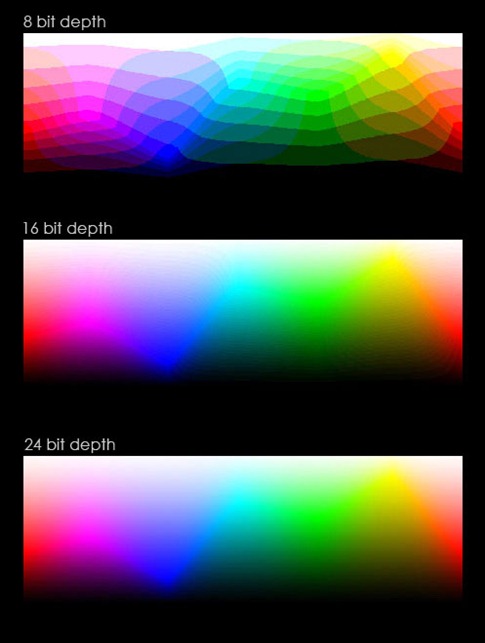
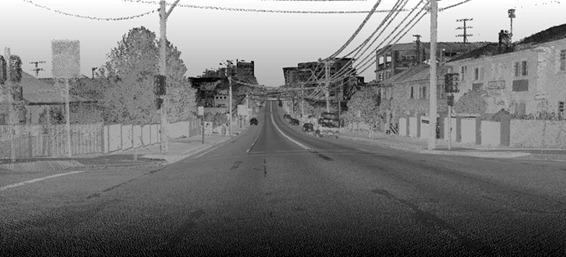




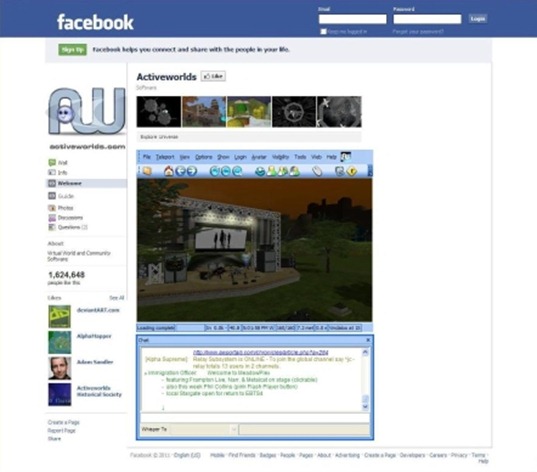
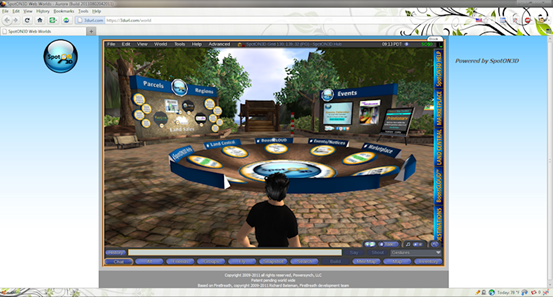
 Introducing FireBreath
Introducing FireBreath





